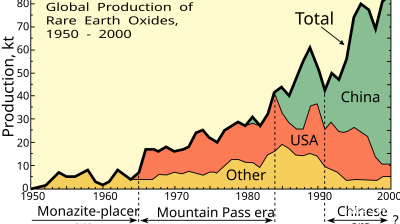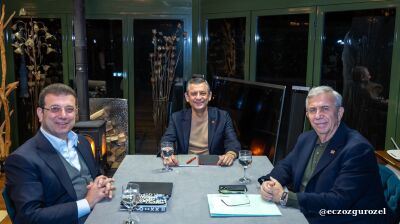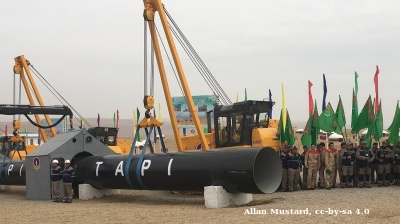Leaders of the Global South will flock to Kazan, the capital of Tatarstan, on October 22 for this year’s BRICS summit hosted by Russia, where they hope to thrash out some more details of the new non-aligned global order that its de facto leaders, President Vladimir Putin and China’s President Xi Jinping, are hoping to establish in order to challenge what they call the “unipolar” order, the US hegemony.
Originally a marketing term to sell stocks, coined by the legendry Goldman Sachs analyst Jim O’Neill, the grouping has since developed into a political alliance of the world’s biggest emerging markets. And with geopolitical tensions high the BRICS is becoming an increasingly important player on the global stage.
This year the group has two main topics to address: the enrolment of more members and setting up a global payment system that does not depend on the dollar.
A lot of progress has already been made on the payment system already after central bankers around the world were freaked out by the US’ decision to weaponise the dollar in its clash with Russia and seize the latter’s hard currency reserves, formerly considered sacrosanct. The process of de-dollarisation has begun, but thanks to the greenback’s dominance, it will take years to unwind. The BRICS are looking at some sort of cryptocurrency, a coin dubbed “BRICS Pay”, that will be based on digital versions of the yuan, rupee and ruble, as a possible replacement, but the earliest that could appear is 2028, say experts.
Ahead of the meeting, Brazil’s Foreign Affairs Secretary for Asia and the Pacific Eduardo Paes Saboia said he wants to see an increased use of national currencies by BRICS member countries in global trade, and less use of the dollar.
"[The issue of reducing the reliance on the US dollar] has already been considered at meetings of finance ministers and heads of central banks [of BRICS]," he told reporters. "I hope that those discussions will be reflected in a certain way in the declaration in Kazan. They will obviously continue during Brazil’s chairmanship [in BRICS in 2025]," the diplomat said.
President of BRICS New Development Bank Dilma Rousseff also said in October that the financial organisation intended to use national currencies for investing in the private sector of the economies of member countries.
Bringing new members into the club will be much harder and strikes at the heart of the vision of what the current members see as the purpose of the organisation. Russia and China would like the BRICS to be some sort of anti-G7, a genuine geopolitical rival to the US and its supporters. Brazil and India have a much more pragmatic view and would like to see the BRICS as enhancing global cooperation and trade to help their countries flourish.
These rivalries were on display last year when Russia and China dominated the last BRICS summit that saw several new members join, including Iran, Egypt, Ethiopia and the United Arab Emirates (UAE), with the Kingdom of Saudi Arabia (KSA) dithering on the sidelines. This year another 27 countries have formerly applied to join what is now known as the BRICS+, with another 22 that have expressed an interest in becoming members.
President Vladimir Putin is keen to see as many countries as possible join in ordere to bulk up the organisation, but India and other countries want to keep the club exclusive so as not to dilute the clout of current members. Indian Prime Minister Narendra Modi presented a very difference vision at last year’s G20 summit, hosted by India, which focused more on economic cooperation but also added the African Union as a member, given that it represents all of Africa’s 54 countries.
Notably both Putin and Xi chose to stay away from that summit, highlighting the disagreements between the leading emerging markets and setting Modi up as potential rival leader of the emerging world for both Putin and Xi and a competition between the two biggest Global South clubs. Also notably, the G20 includes the members of the G7, underscoring its more inclusive and cooperative nature.
The delegates at Kazan are well aware of these rivalries but they are attending not because they intend to join one of the camps. This is not a new Cold War, but since the start of the war in Ukraine, we live in an increasingly fractured world and the emerging world countries are simply looking for a counterweight to an increasingly aggressive US. Kazakhstan is a good example that traditionally has maintained very close ties with Russia and still does, but it said this week that it will not apply to join BRICS, as all the countries of Central Asia are following a multi-vector foreign policy that attempts to be partners with both East and West, for fear of being swallowed and made vassal states if they move out of the centre ground.
If it comes to a clash then the BRICS have some formidable weapons at their disposal.
Oil and gas: The BRICS members, including the new members Saudi Arabia, the UAE and Iran, together control over 50% of the world’s known oil deposits and 43% of global oil production.
Raw materials: Russia is a cornucopia of raw materials and home to large deposits of nearly ever element on the periodic table. While China is poor in most resources, it has caught the US napping by building up a virtual monopoly on the processing of a majority of the world’s rare earth metals and other exotic materials that are now essential in the production of things like EVs and computer chips. As of 2024, the BRICS, along with their new members, control approximately 72% of the world's rare earth metal reserves.
Raw materials are an Achilles’ heel for the G7. While the US is largely autonomous in most raw materials, especially since the shale revolution in 2016 turned America from being a net importer of oil to a net exporter, the deficit Europe has few of the inputs it needs to run its economies and remains heavily dependent on imports, especially from Russia.
People: The biggest resources the BRICS have are their people. China and India alone are home to 2.5bn people, or a third of the world’s entire population. With 150mn people Russia is also by far the largest consumer market in Europe. Brazil enjoys a similar status in South America as home to 217mn people, making it the most populous country with a third of the total Latin America’s population of 664mn people.
South Africa is the exception with a total of only 64mn people, or about 4.7% of the total African population of 1.4bn. Nigeria is the biggest country in sub-Sahara Africa. This discrepancy has led O’Neill to criticise its inclusion in the BRICS group, saying “it’s not big enough”, but thanks to its colonial legacy, South Africa has one of the most developed economies in Africa. However, Africa’s rapid development and obvious long-term potential, not to mention the copious natural resources that rival those of Russia, are making it increasingly attractive to the rest of the world.
The G7 countries collectively account for only about 10% of the global population, around 770mn people. Moreover, the US and EU are suffering a growing demographic crisis. Not one of the EU members has a fertility rate of more than 2.1 births per women needed to keep the population stable, and its members are becoming increasingly dependent on migrant labour. In this regard the war in Ukraine has been a blessing, as the 7mn refugees from the country have given EU labour markets a badly needed shot in the arm. For Kyiv, the same migration has been a disaster, as Ukraine now has the worst demographics in the world.
Fertility rates in major emerging markets vary widely but many of the major economies are being lifted by an expanding population. India’s population is more or less stable with a fertility rate of 2, while China’s is decreasing alarmingly with a fertility rate of only 1.2. Brazil is shrinking (1.6), while South Africa (2.2) and Turkey (2.1) are growing.
In regional terms, the G7 countries are suffering from shrinking populations, while Latin America as a whole is stable with a fertility rate of 2, Asia is growing slowly with 2.2 but Africa is the global leader with 4.2.
Looking at long-term economic growth and the Global South will catch up and overtake the G7 purely on demographic-driven growth alone.
Growth: Historically, BRICS nations have posted higher growth rates than the G7. China and India, in particular, have seen rapid economic expansion over the past two decades, with growth rates frequently surpassing 6-7% annually, although China has maxed out and is only expected to grow by some 5% this year. India still has plenty of catch-up growth ahead of it.
Brazil, South Africa and Russia have experienced more subdued growth recently, but are still expanding faster than the G7. Three of the main economies in Europe – Germany, France and Italy – are expected to contract for a second year in a row this year. Europe is in particular trouble, as it has lost its competitive edge and is now falling behind not only the US, but the up and coming emerging markets like China, according to report from former Italian Prime Minister and ex-European Central Bank boss Mario Draghi, who said the EU needs to invest €800bn a year just to stand still.
Together, the 10 countries of BRICS+ represent 35.6% of global GDP by PPP, more than the Group of Seven major democracies 30.3%, but are slightly behind in nominal terms.
The US is in better shape, with an economic growth forecast for 2024 anticipated to moderate after a stronger-than-expected performance in 2023, but it will still grow by between 1.8% and 2.7% for the year, according to various estimates.
Investment and technology: Ironically, it is the West that is funding this transition, as the world’s leading Emerging Markets (EMs) are also moving rapidly up the annual foreign direct investment (FDI) confidence ranking, according to management consultancy Kearney, and are starting to compete directly with the leading developed markets. The much sought after FDI brings with it technology transfers and business skills that accelerate the development of emerging markets.
The West has kept its lead for so long thanks to its superior technology, but that gap is closing. Last year China filed 6mn patents, the US 3mn, whereas all of the EU members collectively filed only 400,000.
On top of that, the West has grown rich by exporting manufacturing to the Global South, politely dubbed globalisation in the West, but increasingly called colonialism in the emerging markets – a theme that Putin plays on constantly. The Global South contributes 90% of the labour that powers the world economy, but receives only 21% of the revenue, according to a recent study published in Nature Communications.
Now wages in the Global South are rising and that gap is closing as middle classes appear in China, India and Africa. Even Russia has seen the emergence of a new war middle class on the back of record-high real disposable incomes up to 9.6% in July. The wealth transferred from south to north will reduce in proportion as time passes as these middle classes expand.
Initially Western companies exported their low-skilled jobs to take advantage of the low wages, but increasing the study found, they are exporting high-skilled jobs as well. The US has responded by slapping export controls on the export of technology to places like China, but a report from the Federal Reserve Bank of New York says they have backfired and supercharged innovation; in the last few years China has changed from being a net importer of technology to becoming a net exporter.
GDP: The wages in the Global South are still lower than those in the North, but the changing dynamic of wealth is also apparent if measured in PPP-adjusted terms – what you can actually buy for a yuan or a ruble. China has already overtaken the US to become the world’s largest economy in adjusted terms and this year Russia displaced Japan to become the fourth largest economy in the world in PPP terms. Of the top five economies in the world, three are now BRICS members. And both China and India are forecast to overtake the US by 2070 in nominal terms too.
The G7 still dominate trade and investment flows, but China has famously launched its Belt and Road Initiative (BRI), where it has been pouring money into partner countries, and often into the poorer emerging markets, as those like Russia can take care of their own investment needs. As bne IntelliNews reported from strategic investments in infrastructure to energy and telecommunications, Latin America has become the latest crucial hub for Chinese investments.
Features

Asian economies weigh their options amid fears of over-reliance on Chinese rare-earths
Just how control over these critical minerals plays out will be a long fought battle lasting decades, and one that will increasingly define Asia’s industrial future.

BEYOND THE BOSPORUS: Espionage claims thrown at Imamoglu mean relief at dismissal of CHP court case is short-lived
Wife of Erdogan opponent mocks regime, saying it is also alleged that her husband “set Rome on fire”. Demands investigation.

Turkmenistan’s TAPI gas pipeline takes off
Turkmenistan's 1,800km TAPI gas pipeline breaks ground after 30 years with first 14km completed into Afghanistan, aiming to deliver 33bcm annually to Pakistan and India by 2027 despite geopolitical hurdles.

Looking back: Prabowo’s first year of populism, growth, and the pursuit of sovereignty
His administration, which began with a promise of pragmatic reform and continuity, has in recent months leaned heavily on populist and interventionist economic policies.



